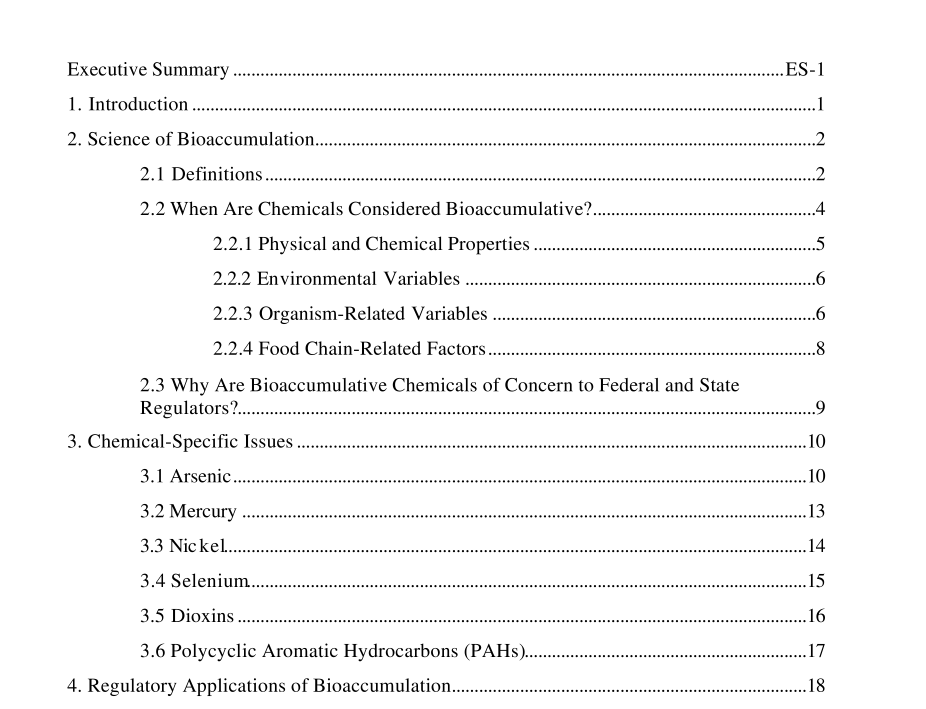API Publ 4701 pdf download

API Publ 4701 pdf download.American Petroleum Institute Environmental, Health and Safety Mission and Guiding Principles
Persistent, Bioaccumulative, and Toxic (PBT) Strategy The objective of the USEPA’s PBT strategy is to reduce risks to human and ecological health by reducing exposure to PBT pollutants. PBT chemicals are defined by USEPA as those chemicals that are resistant to degradation in the environment, remain in the environment a long time, and may travel long distances (persistent); accumulate in fish and other organisms (bioaccumulative); and have been demonstrated to cause adverse effects in humans or wildlife (toxic). To date, USEPA has identified 12 PBT chemicals, including mercury, dioxins, and one PAH (benzo(a)pyrene). USEPA’s program is designed to address issues on an Agency-wide basis. Over the last year, several program offices have developed strategies to manage PBT chemicals and meet the PBT goals, as described below. Toxic Substances Control Act (TSCA). To prevent the introduction of new PBT chemicals, USEPA has revised the pre-manufacture notice process under TSCA to include a new category of PBT chemical substances or mixtures. The new PBT chemical category under TSCA includes chemicals that have half-lives of greater than two months and bioaccumulation factors greater than 1000. These chemicals will be subjected to additional testing requirements before their manufacture is permitted.
Section 2.0 provides a brief description of the science of bioaccumulation, including definitions of key terms and the identification of those physical/chemical and biological factors that influence the bioaccumulation potential of a chemical. As described earlier, some of this information has been drawn from API publication number 4656, Bioaccumulation: How Chemicals Move from the Water into Fish and Other Aquatic Organisms. This section concludes with a discussion on why regulatory agencies are concerned about bioaccumulative chemicals.
2.1 Definitions Bioconcentration of a substance is defined as an aquatic organism’s passive uptake directly from water through respiratory membranes, such as gills or other body surfaces. Accumulation from other environmental media, such as sediment, or from food is not considered. A bioconcentration factor (BCF) is the ratio of the chemical concentration in an organism to the concentration in water, assuming no exposure by food sources (see Text Box 2.1). The concentration in water should be calculated from a controlled laboratory experiment where the only source of the chemical is from water, and bioaccumulation is at steady state (uptake equals elimination). In contrast to bioconcentration, bioaccumulation of a substance refers to an organism’s general uptake and retention from water, and from ingested materials, such as sediment or food. The bioaccumulation factor (BAF) represents the ratio of the concentration in an organism to the concentration in water, including both the organism and food sources exposed to the chemical. Unlike the BCF, the BAF is generally derived from a field concentration rather than from laboratory experiments.The main distinction between bioaccumulation and bioconcentration is the role of ingested sediment and food. For aquatic organisms such as phytoplankton, uptake of chemicals mainly occurs through the water column and can be expressed by a BCF. However, a BAF should be used when food chain transfer or uptake from ingested sediment becomes more important. Unfortunately, the terms BAF and BCF have sometimes been used interchangeably by federal and state agencies. Because of this confusion, federal and state agencies now often specify how BCFs and BAFs should be determined (e.g., field- measured, estimated from laboratory data) before being used as part of a standard calculation. Although this standardization will reduce the variation in the BAF or BCF selected, often the use of estimated values, in lieu of measured values, has a significant effect on the final outcome. In addition to BAFs and BCFs, federal and state agencies also use a biota-sediment accumulation factor (BSAF) to predict organic chemical accumulation by aquatic organisms. For organic chemicals, the BSAF refers to the ratio of a chemical’s lipid- normalized tissue concentration in an aquatic organism to its organic carbon-normalized (OC) concentration in surface sediment. Lipid (i.e., fat or fat-like tissue) and organic carbon levels are key factors that cause bioaccumulation levels to differ among organisms and among sediments (see Section 2.2). As described in the GLI, BSAFs can be used to calculate BAFs for use in setting organic chemical water quality standards.









